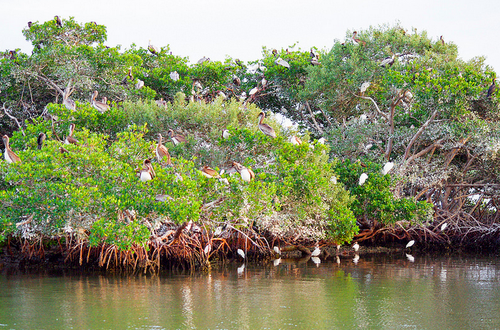
Mangrove swamps are an ecosystem consisting of mangrove trees growing in water. Mangrove swamps occur in tropical and subtropical areas of the world, along the coastline.
The mangrove trees have aquatic roots that enable them to stay anchored while growing in the coastal sea. These roots offer many aquatic species a home and can be quite diverse. Many fish species, along with crabs and other crustaceans, are content to hang out in these tree roots. Above, birds, insects and even some mammals such as monkeys, can be found living in the tree branches. In some places, pigs clamber over the mangrove roots.
Mangrove swamps have various important roles, including water filtering, food provision and shore shielding to reduce wave and tidal impact. The removal of mangrove trees and mangrove swamps often results in increased wear and tear on the shoreline, reduced breeding grounds for fish and crustaceans and increased pollution. The impact of king tides, flooding and tsunamis can be amplified when mangrove swamps are removed, depending on the location and shore terrain.
Many countries around the world are now actively trying to restore or rehabilitate mangrove swamps, especially given their role in disaster risk reduction and in providing livelihoods for many locals.